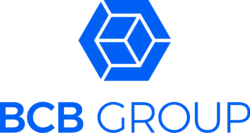
Who We Are
Embryo is an independent digital marketing agency.
We are known for delivering award-winning, integrated campaigns that engage customers at every stage of their buying journey.
OUR MISSION AND VALUES
We See What Others Don’t
Embryo was founded in 2015 as a business that was very aware of the need for a company that could spearhead innovation, growth, and development. In just a few short years, the company, powered by a raft of incredible talent, has done just that.
We never tire of helping our clients, across a range of industries, including but not limited to, finance, automotive, tourism, manufacturing, and e-commerce. The digital channels we leverage allow them to grow their teams, dominate their industry’s online space, and most importantly, increase their revenue.
-
Together
Our environment fosters the growth of our business and our people. Collaboration is what drives our creativity. We value inclusivity and we are all in this together.
-
Curious
Our curiosity is what allows us to understand the problems brands face. It drives us to delve deeper, widen our view and find insights that others can’t see.
-
Innovative
Innovation is at the heart of our business. It’s what drives us and our clients forward. The key to innovation is the balance of creativity and delivery.
-
Focused
We are focused on service, delivery, optimisation, results and changing the way our industry is perceived.
Organic
Paid
Creative
Brands That Trust Us
Latest News and Blog
Our Open Positions
Finance Manager
We’re hiring a Finance Manager with a strong financial background and a keen eye for detail to oversee all financial duties and processes. As a...
SEO Account Manager
The SEO Account Manager is a key role within the Embryo Pod structures. They manage their own client strategies and monthly SEO deliverables, support...
Paid Social Manager
Duties & Responsibilties Paid adverts – creating paid adverts on a variety of social media channels for clients, including Facebook,...
Content Writer
Duties & Responsibilities High-quality content writing – You will frequently be writing well-researched, creative and fully-optimised...
















